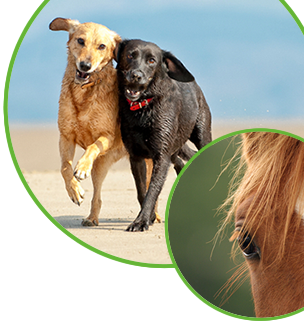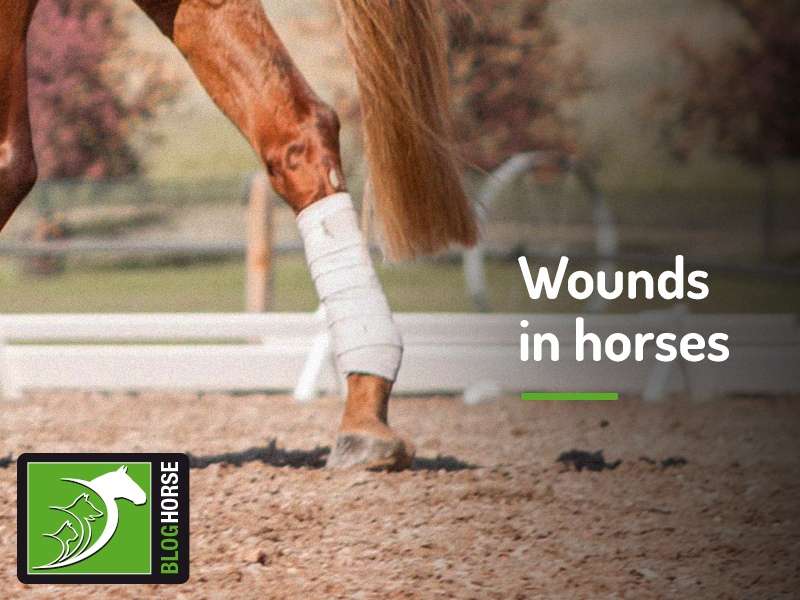
Wounds in horses

Like any other animal, including ourselves, horses can suffer from a multitude of injuries that may result in open wounds.
Today, we're covering three important aspects to consider when facing wounds in horses that can help you be prepared for an unexpected situation.
#1 - Vet contact information
This had to be top on our list! Always have your vet's contact information near you in case of an emergency so that you can seek professional advice quickly.
Wounds in horses can look very dramatic with torn, dangling skin, showing muscles and tissues underneath, but often wounds that are small in size and not as gory in appearance may be the ones that will need attention and treatment more promptly.
#2 - Blood everywhere
If your horse is wounded, it probably means that there's blood, and sometimes even a lot of blood! Don't panic horses are large animals, which means they also have a large volume of circulating blood. Putting it in perspective, a haemorrhage that would be fatal for a person is not likely to cause noticeable problems for a horse!
That said, instead of focussing on the amount of blood you are seeing, focus on locating the source of the bleeding and how the bleeding looks. If you see blood dripping, it is likely to be coming from a vein, which is easier to manage. However, if the blood is shooting, it's probably coming from an artery, which comes straight from the heart with high pressure, and this situation needs immediate attention.
In either case, grab something you have at hand (if you have a first aid kit, grab a sterile dressing, if you're out hacking in the woods, a piece of clean clothing will do) and apply firm pressure to the wound for a while to stop the bleeding.
#3 - Wound location and type
Wounds affecting the lower limbs should always be assessed by a vet. As the limbs consist mostly of bones, joints, tendons, ligaments and blood vessels, there is not much support from muscles or other tissues in case of trauma.
This also means that a wound on a limb is more likely to affect a joint or tendon sheath, which can quickly compromise the horse's overall health.
Head wounds and wounds affecting the eyes should also receive prompt veterinary attention, as there are many superficial and delicate vessels and nerves on the face.
As for the type of wound, appearance can be deceiving, and the smallest wounds can actually be the worst.
Puncture wounds are extremely dangerous as it's not possible to assess their depth just by observing them. Puncture wounds on the limbs can easily affect joint structures, and when located on the body, they can cause internal organ damage and infections.
Remember, the way a wound heals is often influenced by the initial first aid applied, so don't hesitate to contact your vet to help you! Also, always approach your horse with caution and be attentive to subtle signs, as pain can lead to aggression.
And if you're interested in knowing what you can do in an emergency situation before professional advice and treatment can be obtained, have a look at our equine first aid course on The Pet Professionals' site.
Would you like to know more about horses? Check our Equine Courses:
Equine courses
Published: 02 Jun 2021
Read the previous article: Taking your pet to the ophthalmologist

